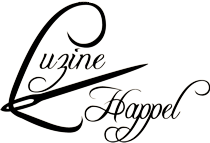Today I can report on activities from the past, present, and future.
Recently, Elisabeth Erdmann presented her and her students’ work in an exhibition at the Karlstadt Museum.
The exhibition was well attended and there was great interest in the embroidery.
If you live nearby and would like to take a look around or join the group, please feel free to contact Elisabeth Erdmann at any time:
Registration for the open embroidery meeting:
Elisabeth Erdmann
Edelweißstr. 9, 97753 Karlstadt
Tel. 093 53 / 8330
Until Sunday, Heike Götz from Binsdorf is exhibiting works of Schwalm whitework at the Museum of Folk Art in 72469 Meßstetten. She will be present during opening hours and will demonstrate the technique.
Heike Götz reports:
“We were surprised at the number of guests who came to the exhibition at the opening. Some people have already been to the exhibition three times.
Depending on the number of visitors, we even stayed longer.
Since I demonstrated how Schwalm embroidery “works” on lavender sachets, people were very surprised at how complex this embroidery is. I’ve often heard the comment that old needlework books don’t mention anything about Schwalm embroidery.
It’s also been well-received that I try to teach the children how to embroider as a “break worker.”
Museum für Volkskunst
Hangergasse 16
72469 Meßstetten
On “Intangible Cultural Heritage Day” on October 17, 2025, Margarete Grandjot will hold a “Schwälmer Day.” In her studio, visitors will be able to see and experience everything related to this embroidery technique.
If you are also planning an event on the topic of “Schwalm Whitework” for October 17, please let me know. I will forward the information to the German Commission for UNESCO. They will use their channels—website and newsletter—to raise awareness of your activities.
See also: A Small Exhibition
See also: Schwalm Whitework Currently














































